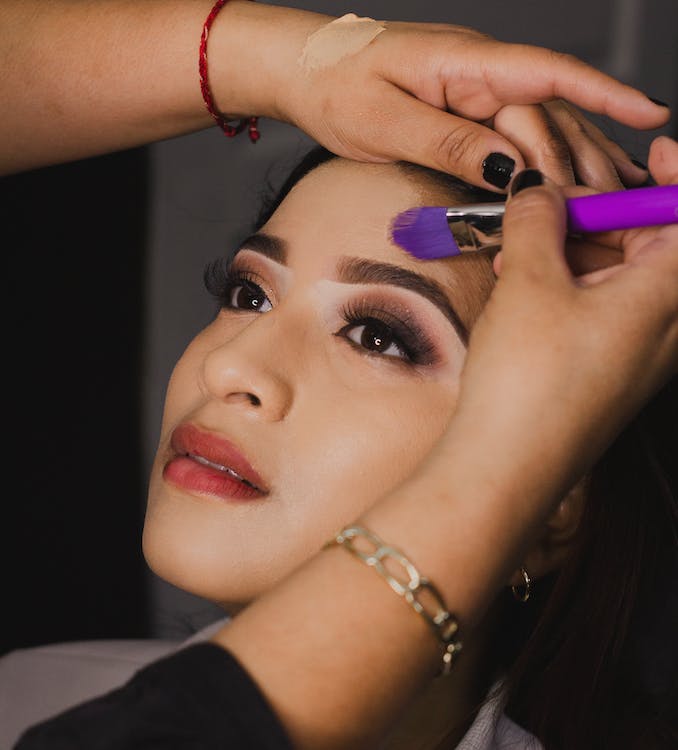Picking the right concealer can be a daunting task. With so many different shades, formulas, and brands to choose from, it can be hard to know what is best for your skin type and needs.
However, with this article, you should have no trouble finding the perfect concealer that works for you.
Let’s get started!
Makeup concealer is an essential tool for any makeup routine. It is used to hide imperfections, even out skin tone, and provide a smooth finish for the rest of your makeup application.
The concealer comes in many forms and is available in various shades to match different skin tones. With its versatile uses, it’s no wonder why so many people rely on this product every day.
If you have dark circles under your eyes or blemishes that need concealing, use just enough product to cover them up without making them look too obvious.
For the best result, apply concealer after applying foundation but before setting powder—this will help create an even base with minimal effort.
One last benefit from using makeup concealers: they are great at creating contours and highlighting certain areas like cheekbones or brow bones, which would otherwise not stand out if left untouched by cosmetics products such as bronzer, etc.
This way, you can give your face some definition without having to spend hours blending multiple products, thus saving time while still achieving desired results quickly and easily.
All these factors combined make concealing one of the best tools when it comes to perfecting our everyday looks—whether natural, lightweight makeup, or full-on glamorous evening.
Picking the Right Concealer: Tips on How to Choose
To make sure you get a product that will work best for your skin type and color, here are tips to help you pick out the perfect concealer:
The first tip is to determine your skin type and undertone before shopping for a new concealer.
Knowing whether your skin is oily, dry, or a combination will help narrow down which formulas work best with each type of skin and what shades look most natural on it.
Additionally, understanding if you have cool undertones (pink-based) or warm undertones (yellow-based) will help in finding a shade that won’t appear too light or too dark on your skin.
Lastly, swatching different colors at store displays is essential in selecting an appropriate match since some brands offer more than 20 shades per product line alone.
When swatching, try out various tones along both sides of the jawline—the side closest to the ear should always be slightly lighter than the other side to give it a seamless blend on the neck area without creating an unnatural contrast between areas.
You’ll get a better idea of what a particular color looks like on the face instead of relying on its appearance on the bottle or tube packaging. It’s also important to remember to use a setting powder after applying foundation or concealer; this step helps keep makeup in place all day by preventing excess oil buildup!
Should Concealer be Lighter or Darker than Foundation?
The main argument in favor of using a lighter concealer than foundation is that it helps create a more natural look by blending in with your skin tone better and creating subtle highlights on certain areas like under the eyes or around the mouth.
This technique also allows you to apply less product overall since you don’t have to worry about overdoing coverage in one area while leaving another bare-faced—a common problem when using darker shades of foundation.
Additionally, if you are trying out contouring techniques with different colors, having a light base layer makes blending easier and prevents harsh lines from forming between two contrasting shades.
Overall, there isn’t a right answer when deciding whether concealer should be lighter or darker than foundation; rather, what matters most is how well each color complements your skin tone, along with your personal preference regarding the desired level or type of coverage needed at any given moment.
That being said, experimentation might be needed before settling on a go-to combination, especially if you’ve never used either product before.
How to Choose a Concealer Shade for Under the Eyes
Choosing the right concealer shade for under the eyes can be tricky, but with a few simple tips, you can find the perfect match. The first step is to consider your skin tone.
If you have fair skin, look for shades that are slightly lighter than your natural complexion; if you have medium or dark skin tones, opt for something slightly darker. Also, it’s important to choose a formula specifically designed for under-eye coverage, as these will provide more hydration and bendability than regular concealers.
Once you’ve found an appropriate shade of concealer that matches your skin tone, it’s time to apply.
Start by dabbing on small amounts of product at a time and blending outward from the inner corner of each eye in gentle circles until completely blended into the rest of your makeup look.
Avoid dragging or pulling too hard on this delicate area as this could cause irritation and redness over time.
If needed, add additional layers until desired coverage is achieved; however, make sure not to go overboard with too much product as this may leave creasing in fine lines around the eyes when worn throughout the day or night!
Finally, take note of how long wear lasts throughout the daytime and nighttime hours.
Some formulas may require touch-ups after several hours, while others might last all night without needing any reapplication whatsoever. So, experiment with different brands and products until you find one best suited to your individual needs and lifestyle.
With these simple tips, anyone can easily find their ideal under-eye-concealing solution quickly and effortlessly; just remember that practice makes perfect, so don’t give up if results aren’t immediate on the first try.
Conclusion
Picking out the right concealer involves taking all factors into account – from the desired level of coverage to matching skin tone shades and selecting an oil-free formula if necessary. With careful consideration and practice, anyone can find their perfect color match.

